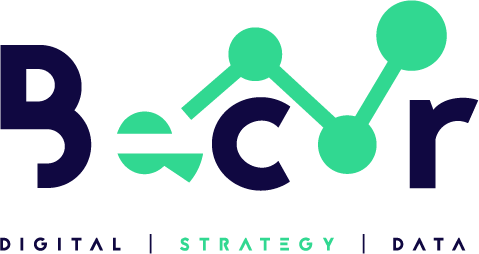Since the COVID-19 started, so many small businesses in Kenya have realized how important going digital and using social media as part of a marketing strategy is.
In this article today, I am going to break down some of the most frequently asked questions about social media marketing.
So whether you are a newbie or a guru, I am sure there is something you can learn that will improve your chances of success.
Q1: Which social media platform should my brand be present?
Your business should choose a platform that aligns with your goals for social media and your target audience or ideal client profile.
Look out for the platform that your target audience is most active and where your message is most relevant.
For example, LinkedIn’s platform hosts a lot of successful CEOs, entrepreneurs, and professionals sharing content including success stories, long-form articles, and market updates.
This is a great platform for lead generation as well as establishing your brand as a source of information.
Instagram hosts tons of millennials sharing what they are eating, pictures from trips, and what they are listening to.
Twitter is full of fun accounts tweeting multiple times a day with trending hashtags, news, and memes. Instagram and Twitter are great for branding, but not so much for lead generation.
Then there’s Facebook which has everyone and their mother on the platform (and your grandma and your weird aunt).
In our opinion, there is no brand that cannot succeed on Facebook because every kind of person is on the platform.
It can be great for lead generation via its advertising platform but is also great for brand awareness!
Take a look at your goals for social and your target audience and join the platforms that make the most sense.
Q2: Do I Have to Be on Every Social Network?
As tempting as it is to increase your visibility by jumping on every social network, a lot of times it’s too much to take on.
Instead of creating accounts just for the sake of having a profile, get strategic with the networks you choose.
An easy way to figure out which social networks to be on is by simply asking where’s my audience’s attention?
If they’re not on Pinterest, there’s no need to spend a bunch of time and energy there. Check out our social media marketing guide to help decide which network is best for your brand.
Another good litmus test for which networks to choose is by asking yourself what value you can bring to the network.
If you can’t create content that people on the network want to see, put your efforts elsewhere.
For instance, if you have the time and resources to make outstanding videos, then you should definitely have a presence on YouTube so you can share those videos across the networks your audience loves most.
If you don’t have the bandwidth for video production, get off of YouTube and don’t feel guilty about not being there.
Remember, you don’t have to take on everything at once. Start out with one or two profiles. If you see success and have time to expand, then slowly add other networks.
Q3: Do My Social Media Handles Have to Be Consistent?
Not only will it be easier for you to promote your social media handles if they’re consistent, but it will also be easier for fans to find and tag you.
When usernames are different across every network, it can get confusing.
If you Tweet an Instagram image but you have two different usernames, it complicates things.
Inevitably, someone will tag your Twitter name on Instagram or your Instagram name on Twitter and you’ll miss opportunities for engagement.
Today it’s not only domain names that matter; usernames are just as, if not more, valuable in terms of digital real estate.
Q4: What Type of Content Should I Share?
It all comes down to knowing your ideal customer.
If you have a solid understanding of their lifestyle, desires, and pain points, it will become much easier to create or find relevant content they’re likely to enjoy and share.
Beyond that, start following influencers in your industry who create outstanding content and share their stuff.
Or you can use it to inspire you to write a few blog posts or conversation starters that riff off the topic or expand upon it.
You can also search relevant hashtags or check out what’s trending on Twitter and Instagram to understand what people are talking about right now, then join in on those conversations.
Idea generation is the hardest part, so let your audience do it for you.
Talk to your followers or ideal customers and ask them what they would like to see. You can also ask your employees to contribute one blog post per month.
Q5: What’s the best time of day to post?
The reality is there is no single best time to post.
It all depends on the network you’re using and when your audience is most active.
It’s going to take a little trial and error to get your timing down.
A good idea is to use a scheduling tool to share posts at different times and days of the week.
Beating the algorithm is always top of mind for social media users.
That’s why the age-old question ‘what’s the best time of day to post?’ is so frequently asked. Facebook, Twitter, Instagram, and LinkedIn all have unique algorithms that work towards (or against in most cases) getting more eyes on your content.
Across different sources, a common theme is that the best time of day to post on social media is earlier in the day (before noon) on weekdays, and later in the afternoon (after 3pm) on the weekends.
This can vary, obviously, by platform and content type.
It is always a good practice to take a look at your analytics and see if you notice any trends between time posted and content performance!
Q6: How often should I be posting?
Your posting frequency depends on your resources and audience.
Your goal is to get quality content that your audience will love in front of as many eyes as possible. Never sacrifice quality for quantity.
It’s better to put nothing out there than to publish content that’s subpar. If that means you can only post on Facebook three times per week—but they are three really good posts that get a lot of engagement—that’s perfectly acceptable.
Just find a consistent schedule that you can maintain.
If you’re struggling to publish on a consistent basis, you can always repurpose content.
For instance, if you made a YouTube video, take 30-second segments of it and post them on Instagram. Old blog posts can be Retweeted with new phrasing and imagery.
In fact, you can set a strategy in which every blog post gets shared across every network on day one, a repeat on Twitter on day three, a repeat on Facebook on day eight, and so on.
If you share the same content across networks, each post should be phrased differently.
For example, LinkedIn doesn’t use hashtags, so you wouldn’t want to copy and paste something from Twitter. An infographic might perform better on Pinterest than on Facebook.
You’ll have to track what kind of content and format does best on each network using social media analytics software. Take that data into consideration when publishing on each platform.
We all know consistency is key on social media, but how consistent do you really have to be?
It depends on the platform. On Facebook, Instagram, and LinkedIn, we typically recommend you post once a day.
On Twitter, to see real success, you need to be tweeting several times a day.
Q7: What are the best practices for tagging people and pages?
The big benefit of tagging people and pages on social media is that you’re instantly connected to these users and companies.
Your update links directly to their account, and the users and companies get a notification that they’ve been mentioned.
It’s a great way to gain a bit more traction and awareness for your update.
Q8: What are the examples of content ideas I can post?
In the marketing world, there is a rule for your posting strategy called ‘The 80/20 Rule’.
The 80/20 rule basically states that 20% of your content should promote your brand, product, or service and 80% of your content should be dedicated to content that interests your audience or engages conversation.
At the end of the day, you are on social media to promote your brand, but your followers did not sign up to follow your infomercial.
By posting content that your ideal client or customer would be interested in, you not only see an increase in engagement, but you will also establish yourself as an industry leader.
Here are some content ideas to incorporate into your social strategy.
- Articles and blog posts
- Reviews of your product/service
- Industry news
- Employee highlights
- Polls
- Upcoming events
- Fun GIFs
- Short-form video content
- Contests and giveaways
- Tips and tricks
- Infographics
Q9: How Do I Get More Followers?
Regardless of which network you’re talking about, it’s the quality, not the quantity of followers that matters.
You need followers who will actually engage with your content, not just add to your follower count.
Since people are bombarded with content from all over the place, you have to give them a compelling enough reason to follow you. You’re not just asking people to follow you.
You’re asking for their attention which is a limited resource. Why should they give their attention to you instead of someone else?
Q10: How do I get customers involved and engaged?
Engagement—the sum of reshares, likes, comments, and clicks—is a big signal of social success for many people. How do you get more people talking about and interacting with your brand on social media?
- Ask questions
- Share behind-the-scenes
- Run a contest
- Host a chat
Q11: Should I Pay for Social Media Advertising?
On a platform like Facebook, you have to “pay to play” in many cases.
In 2016 alone, organic reach dropped 52% for publishers. And with Twitter and Instagram following in the footsteps of Facebook with an algorithmic feed, it’s becoming increasingly difficult to get your content seen organically.
Whether or not you decide to try your hand at social media advertising will depend largely on your budget.
If you can afford to spend some money to promote content on social media, it might be worth experimenting with. Decide on how much you’re willing or able to spend first, then create an advertising strategy within it.
Facebook is by far the most popular platform marketers use for social media advertising.
In Social Media Examiner’s Social Media Marketing Industry Report, 84% of respondents said they use Facebook ads.
However, Twitter, LinkedIn, Instagram (via Facebook), YouTube, and other networks offer to advertise as well.
Feel free to test out different platforms to see which works best for you.
In addition to getting engagement on your posts and growing your follower count, you can also use social media advertising to generate leads, grow your email list or get more eyes on a piece of content.
Q12: Do I Need an Editorial Calendar?
An editorial calendar is a necessary step in bringing your strategy to life.
It can help you stay on track and consistent in messaging across various networks. It can also help you create quality content by planning ahead.
When you see the entire month across all networks in one place, it’s easier to edit the copy for strength and consistency.
Also, when you’re planning ahead, you have a better chance of maximizing your impact on social media.
You’ll have time to plan a distribution strategy for any upcoming content, instead of doing everything as it happens.
For instance, if you know you’re going to launch a contest or sale at the end of the month, reach out to influencers in advance and gain some momentum.
Content will be more likely to go viral if you’ve already lined up influencers to Tweet about your product launch or big announcement at the same time you do. Check out this post on how you can find the right social media influencer for your brand in Kenya.
Q13: Can I use social media in my industry?
Everyone everywhere is on social media!
So, if your business or brand has an ideal customer or client, you can use social media for the betterment of your business.
The key is figuring out where your ideal client/customer scrolls, and how to put your brand in front of them in a way that makes it easy to follow along.
Unless your higher-ups have a strict ‘No Social Media’ policy, your brand can benefit from a social presence.
Q14: Should I Outsource My Social Media Marketing?
For brands that don’t have the resources to put together social media campaigns from scratch, working with an agency can be a smart move.
Social media agencies understand the nuances of different networks, and can often help you be much more effective.
On the flip side, you don’t want to take a completely hands-off approach.
That’s why oftentimes social media agencies prefer to work with clients, rather than completely take over everything.
Nobody knows your brand like you, so you should always have a hand in your social efforts.
But there’s nothing wrong with getting help from specialists.
Have a question that’s not answered here? Comment below or Contact Us and we’ll see if we can answer it for you.
Remember, there’s no such thing as a dumb question, so ask away!


